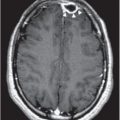| Feature | Primary viral pneumonia | Secondary bacterial pneumonia |
|---|---|---|
| Setting | Cardiovascular disease Pregnancy Young adults (in large outbreaks) | Age >65 years Chronic pulmonary, cardiac, or metabolic disease |
| History | Rapid progression after typical onset | Biphasic illness, with worsening after clinical improvement |
| Physical examination | Diffuse crackles | Consolidation |
| Sputum culture | Normal oral flora | Streptococcus pneumoniae Staphylococcus aureus Haemophilus influenzae |
| Isolation of influenza virus | Yes | No |
| Chest radiograph | Diffuse bilateral interstitial disease | Consolidation |
| Response to antibiotics | No | Yes |
| Mortality | Variable, high during some pandemics | Variable, generally low |
H5N1 infection
Most cases of H5N1 have occurred in healthy young adults, approximately 2 to 4 days after exposure to infected birds. Initial symptoms include high fever and an influenza-like illness. In contrast to infection with human influenza viruses, lower respiratory tract involvement and clinically apparent pneumonia are almost universal. Watery diarrhea may be present before the development of respiratory symptoms. Progression to multiorgan failure, including respiratory failure, renal dysfunction, and cardiac compromise, is common. Atypical presentations, such as encephalopathy, gastroenteritis, and mild respiratory disease, have been reported, but frequencies of such presentations are unknown. Death occurs on average 9 to 10 days after the onset of illness. Asymptomatic infection likely occurs as well, as indicated by antibody screens in populations at risk, but the true incidence is unknown.
Diagnosis
Reverse transcriptase–polymerase chain reaction (RT–PCR) assays are extremely sensitive, specific, and rapid, which has made them the standard for diagnosis. Other rapid assays include immunofluorescence, which requires skilled expertise and has lower sensitivity than RT–PCR. Viral culture is utilized in some areas but takes days to give a result. Serologic tests to measure hemagglutinin neutralizing antibody titers in acute and convalescent sera are not recommended by the CDC for diagnosis due to the delay required to establish the diagnosis. A clinical diagnosis based on fever, headache, myalgias, and cough during influenza season has an accuracy of 60% to 85%. However, influenza cannot be distinguished from other respiratory viruses by symptoms alone, and testing is necessary to know if a patient would benefit from influenza antiviral treatment.
Therapy
Two classes of antiviral drugs are available for treatment of influenza, including neuraminidase inhibitors (NI) and M2 inhibitors. Zanamivir (Relenza) and oseltamivir (Tamiflu) are two NI approved for treatment of both influenza A and B infection. These agents inhibit neuraminidase activity and prevent viral particle release from infected cells. Zanamivir has poor oral bioavailability and is formulated for oral inhalation using a disk inhaler. Oseltamivir is the ethyl-ester prodrug of the active compound and is well absorbed orally. When given within 48 hours after the onset of symptoms, NI decrease the duration of symptoms by about 1 day. Meta-analyses indicate a reduction in the incidence of influenza-related complications including pneumonia and bronchitis when administered early during the course of an infection. There are insufficient data as to whether NI are effective treatment of these complications once they occur, but they may have some modest benefit. These agents are generally well tolerated, although zanamivir can cause bronchospasm and respiratory compromise in patients with chronic respiratory diseases. Infection with NI-resistant virus occurs sporadically but likely has only a limited impact on public health. Despite resistance developing during treatment with oseltamivir in up to 25% of individuals, transmission of resistant strains is uncommon. New agents under active development include peramivir (intravenous) and laninamivir (inhaled), which are long-acting NI. They are effective against viruses resistant to oseltamivir and can be administered as a single dose.
The M2 inhibitors, amantadine and
Stay updated, free articles. Join our Telegram channel

Full access? Get Clinical Tree





